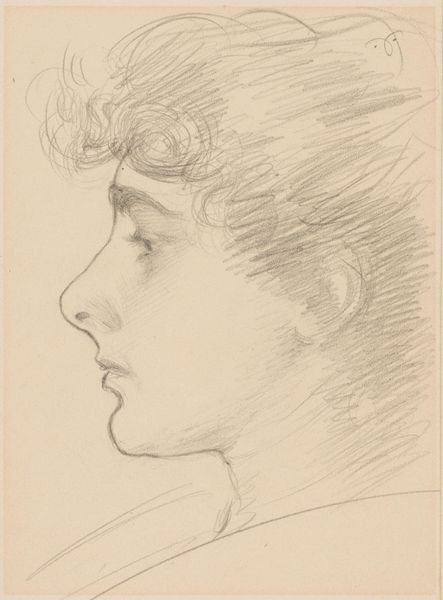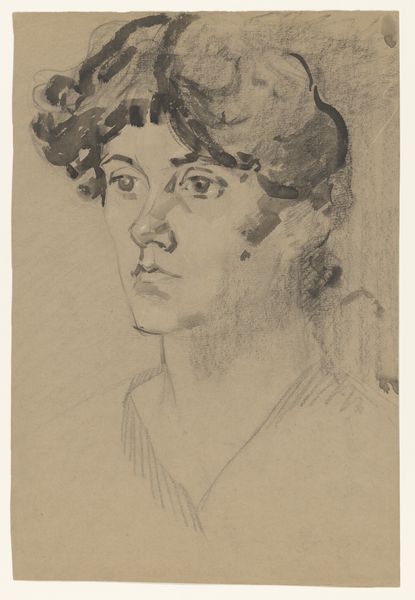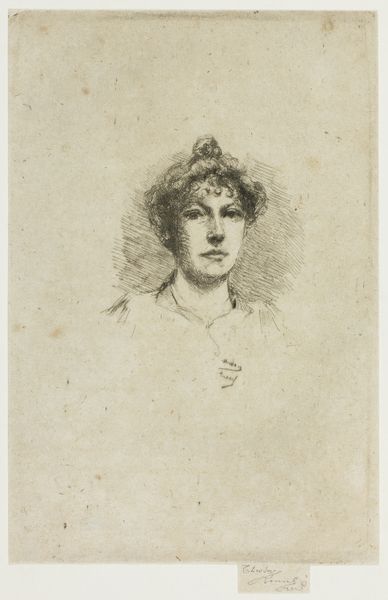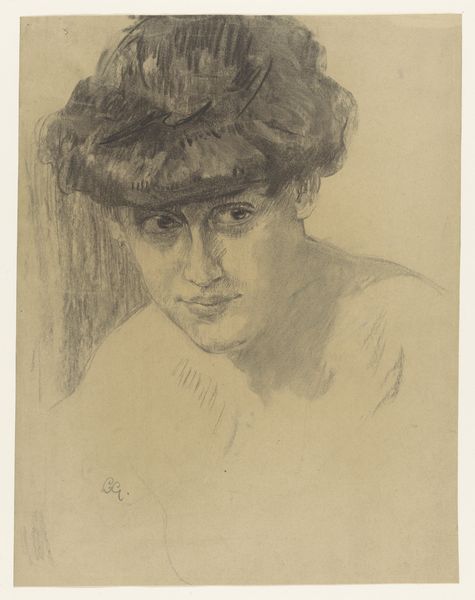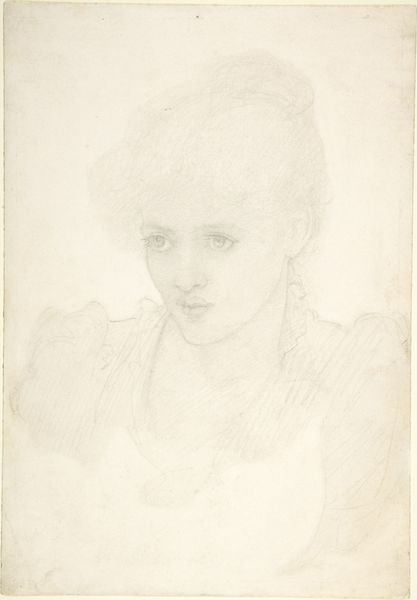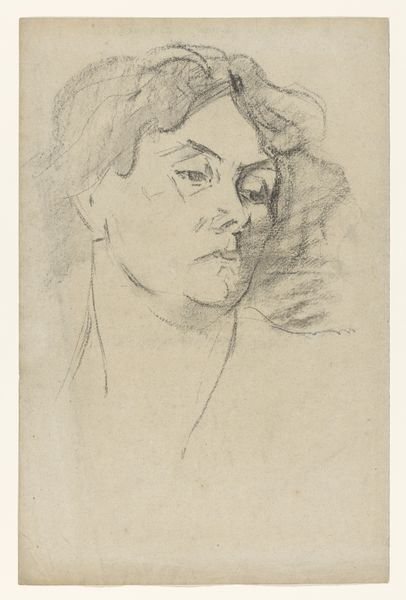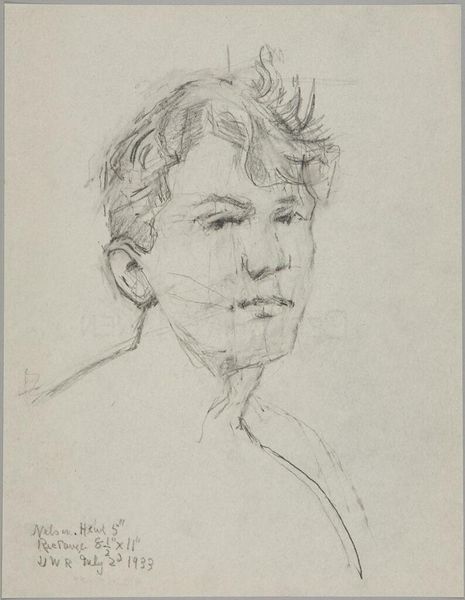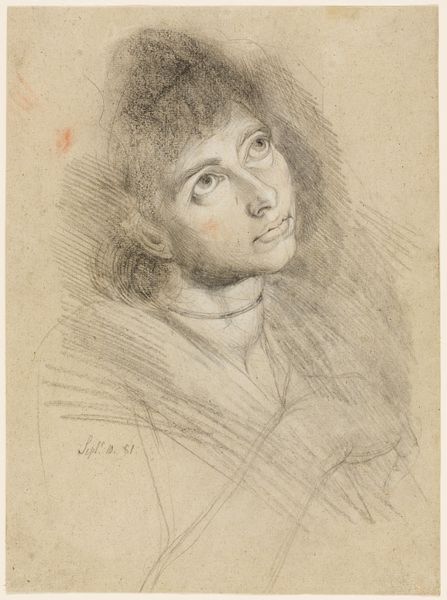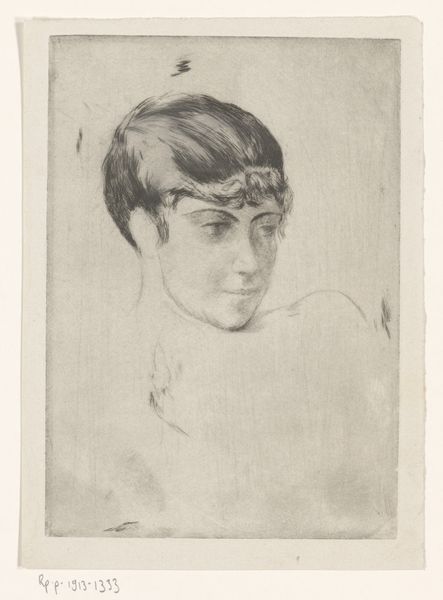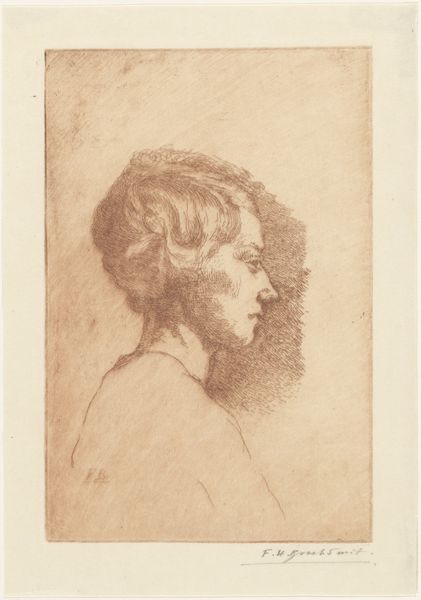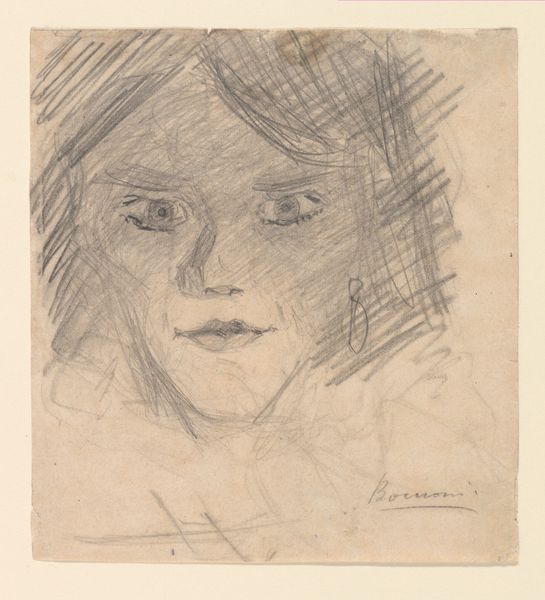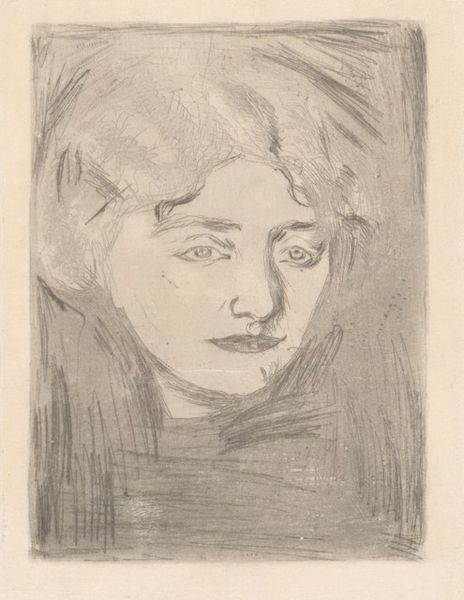
drawing, pencil, graphite
#
portrait
#
drawing
#
neoclassicism
#
pencil drawing
#
pencil
#
graphite
#
portrait drawing
Dimensions: overall: 25.1 x 18.4 cm (9 7/8 x 7 1/4 in.)
Copyright: National Gallery of Art: CC0 1.0
Editor: Here we have John Flaxman's pencil and graphite portrait, "Mrs. Susannah Tulk," created around 1810. It has a tentative quality, like a fleeting impression. What strikes you about this piece? Curator: I see a deliberate act of making. Flaxman's choice of pencil, a readily available and relatively inexpensive material, positions this portrait within a particular social and economic context. It speaks volumes about the burgeoning middle class and their aspirations to partake in artistic patronage. Editor: So you're saying the *material* itself is a signifier of class and consumption? Curator: Precisely. Consider the accessibility of graphite in the early 19th century. It democratized portraiture. The subtle gradations achieved through layering reveal the artist's labor, the time invested in crafting this image. What does that repetitive hatching behind the figure's head suggest to you? Editor: It gives her form, but I can see the construction too. Was pencil seen as lesser compared to painting at the time? Curator: Initially, yes. But artists like Flaxman elevated it. Think about the implications: using a "humble" material to create an enduring image, challenging the established hierarchies of art and craft. Editor: So, he’s sort of imbuing this portrait with a quiet sort of revolution through material choice and visible work? I had thought only about it visually, but now I see how Flaxman employed modest materials and deliberate process to hint at a larger social transformation. Curator: Exactly! It's about reframing our understanding of art production, not just aesthetic appreciation.
Comments
No comments
Be the first to comment and join the conversation on the ultimate creative platform.
